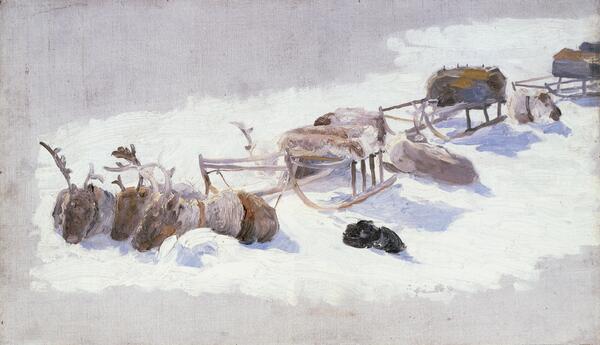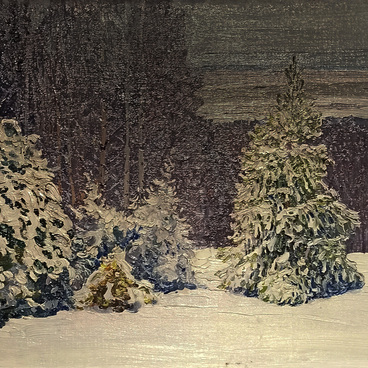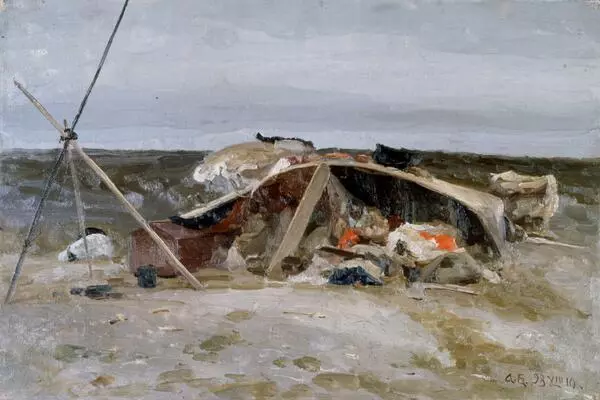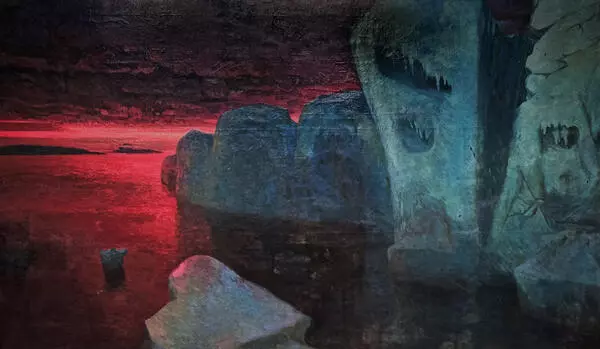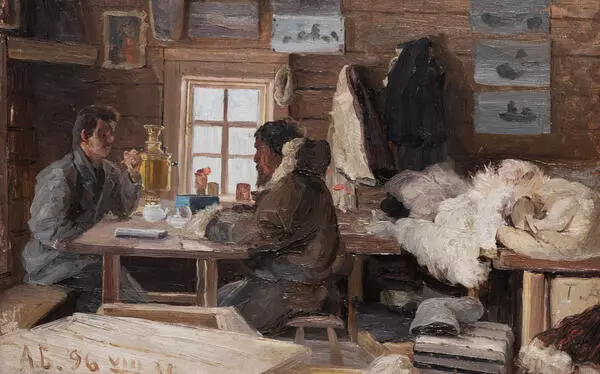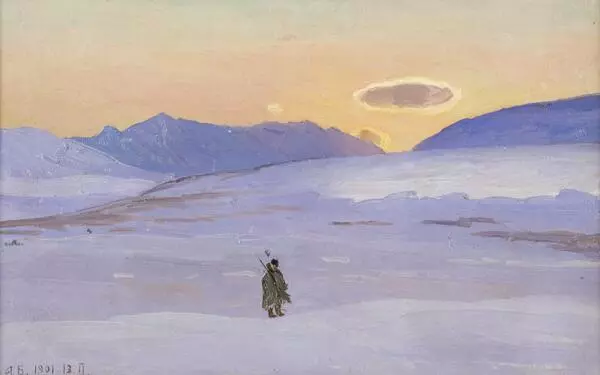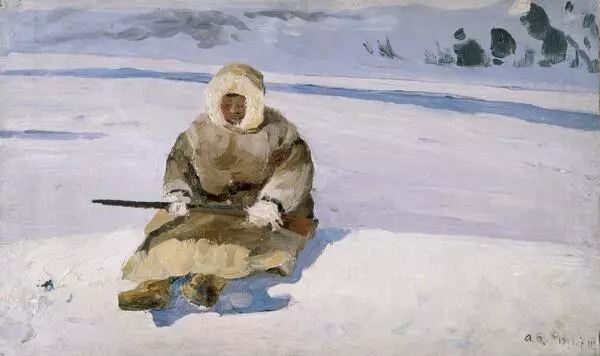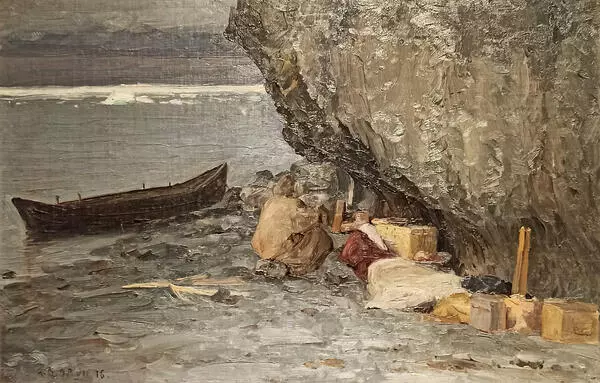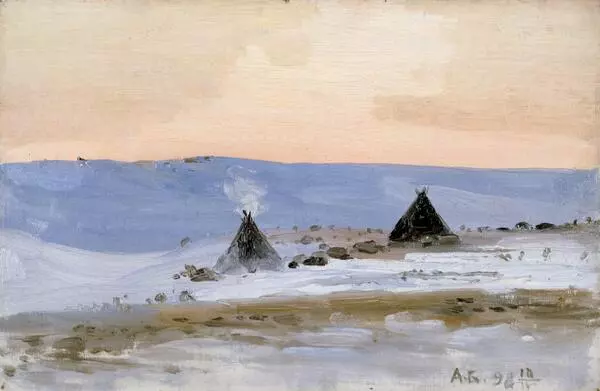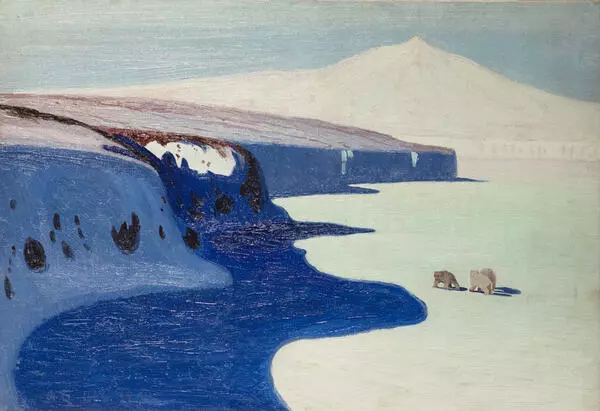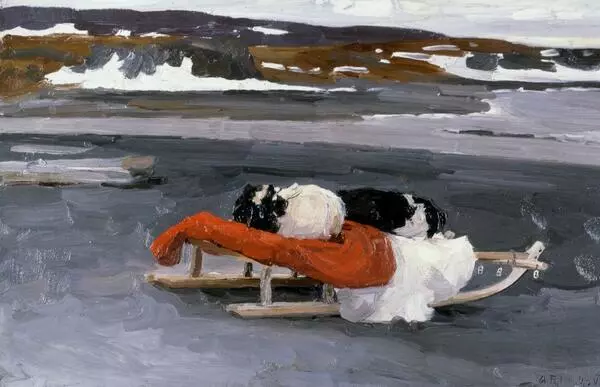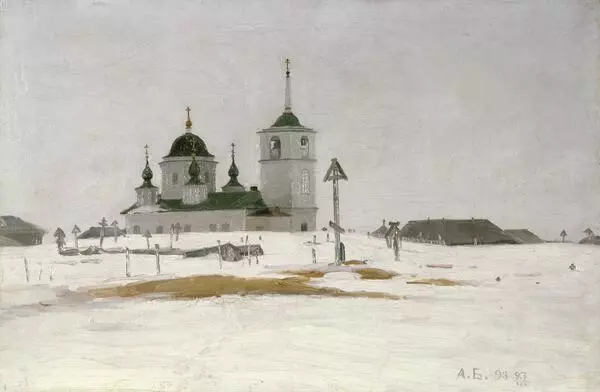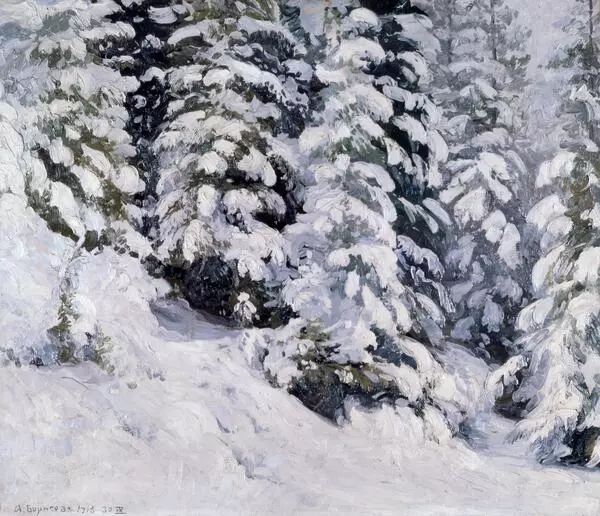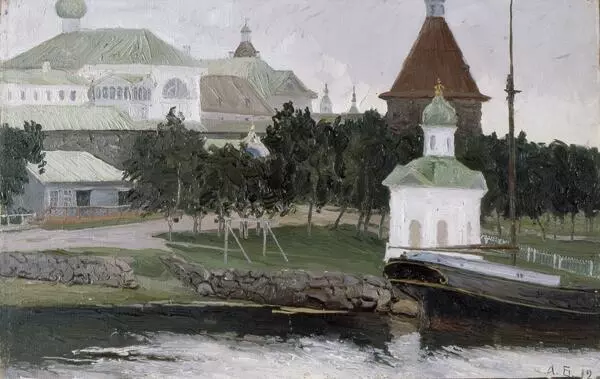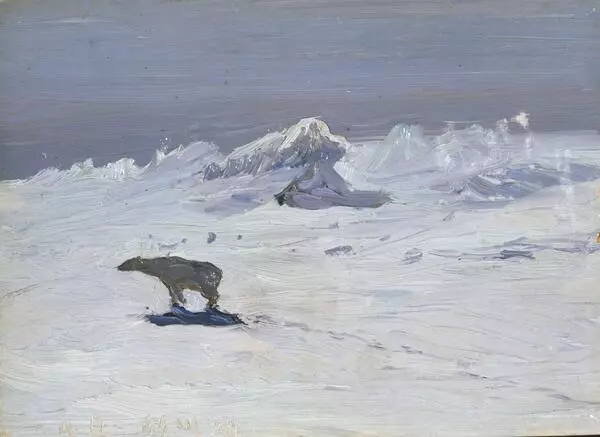The Nenets are nomadic people that move across the tundra with their reindeer herds. The routes and the schedule of the movements depend strictly on the weather conditions.
Alexander Borisov, the artist of this painting, studied closely the people and the animals of the Far North. He wrote: ‘Feeling the spring wind, the reindeer are longing to go north, to the vast expanse of the Arctic Ocean coast, where there are no mosquitoes, nor gnats, nor unbearably bothersome bot-flies that lay their eggs into the reindeer skin, causing them a lot of pain. Following the instinct of the reindeer, the Samoyed follows his herd. However, in the autumn, they gravitate back towards the woods; there is no place for them in the boundless tundra when the terrible winter snowstorms come. In the woods, it’s different; they can hide there. In the cold and blizzard, the reindeer lie down in the fluffy snow; if the ground is covered with ice and they are unable to dig the moss from under the snow, they can pick it from the trees or eat some new shoots of willows and birches. In the spring, the reindeer are very weak and whenever they can, they fall down to the ground and lie still. Apparently, this happens because, no matter how much moss the reindeer eat, all nutrition elements are used for their antlers that grow from scratch and become enormous in about a month. If you touch an antler, you can feel it is very hot. If you cut it with a knife, blood will gush forth. It’s the most sensitive part of the reindeer’s body. Sometimes, even when attacked by a pack of dogs, the reindeer can lie motionless. However, if it is hit on the tips of its new antlers, it will jump up like crazy. If you cut off the antlers, they will not grow this year, and the reindeer will gain weight quickly.’
Reindeer are the only mammals that change colour of their eyes. The colour depends on the season and has to do with the long polar nights. In the summer, reindeer’s eyes are almost constantly exposed to sunlight and turn golden. In the winter, they are deep blue.
Alexander Borisov, the artist of this painting, studied closely the people and the animals of the Far North. He wrote: ‘Feeling the spring wind, the reindeer are longing to go north, to the vast expanse of the Arctic Ocean coast, where there are no mosquitoes, nor gnats, nor unbearably bothersome bot-flies that lay their eggs into the reindeer skin, causing them a lot of pain. Following the instinct of the reindeer, the Samoyed follows his herd. However, in the autumn, they gravitate back towards the woods; there is no place for them in the boundless tundra when the terrible winter snowstorms come. In the woods, it’s different; they can hide there. In the cold and blizzard, the reindeer lie down in the fluffy snow; if the ground is covered with ice and they are unable to dig the moss from under the snow, they can pick it from the trees or eat some new shoots of willows and birches. In the spring, the reindeer are very weak and whenever they can, they fall down to the ground and lie still. Apparently, this happens because, no matter how much moss the reindeer eat, all nutrition elements are used for their antlers that grow from scratch and become enormous in about a month. If you touch an antler, you can feel it is very hot. If you cut it with a knife, blood will gush forth. It’s the most sensitive part of the reindeer’s body. Sometimes, even when attacked by a pack of dogs, the reindeer can lie motionless. However, if it is hit on the tips of its new antlers, it will jump up like crazy. If you cut off the antlers, they will not grow this year, and the reindeer will gain weight quickly.’
Reindeer are the only mammals that change colour of their eyes. The colour depends on the season and has to do with the long polar nights. In the summer, reindeer’s eyes are almost constantly exposed to sunlight and turn golden. In the winter, they are deep blue.

